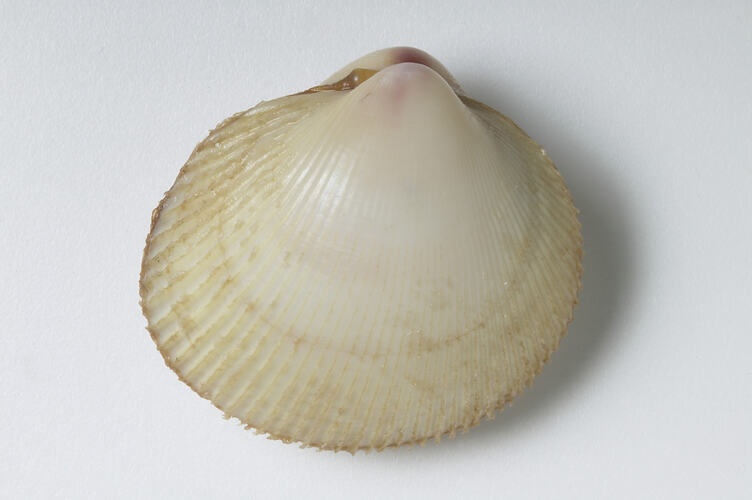General Description
The shells of this species are light, fragile and brittle. They are usually white to cream in colour, some with pink near the rounded apex (umbo). Sculpture of over 50 fine radial ribs. Shell up to 6 cm across.
Biology
This species may be found in large numbers on the sea floor. Like other Australian cockles, this species is not commercially harvested for food, although one northern species was an important element in the food sources of indigenous communities. They are filter feeders.
Distribution
Most states of Australia.
Habitat
In sand and mud, to depth of 30 m.
More Information
-
Animal Type
-
Animal SubType
-
Brief Id
Cream-white shell, over 50 wide radial ridges.
-
Colours
White
-
Habitats
-
Diet
Plankton or Particles
-
Endemicity
-
Commercial
No
-
Conservation Statuses
CITES: Not listed, FFG Threatened List: Not listed, DSE Advisory List: Not listed, IUCN Red List: Not listed
-
Depths
Deep ( > 30 m)
-
Water Column Locations
On or near seafloor
-
Taxon Name
-
Scientific Author
(Lamarck, 1819)
-
Common Name
Thin-ribbed Cockle
-
Other Names
Common Southern Cockle , Narrowly Ribbed Heart Cockle , Rackett's Strawberry Cockle
-
Phylum
-
Subphylum
-
Class
-
Subclass
-
Order
-
Superfamily
-
Family
-
Subfamily
-
Genus
-
Subgenus
-
Species Name
tenuicostata




